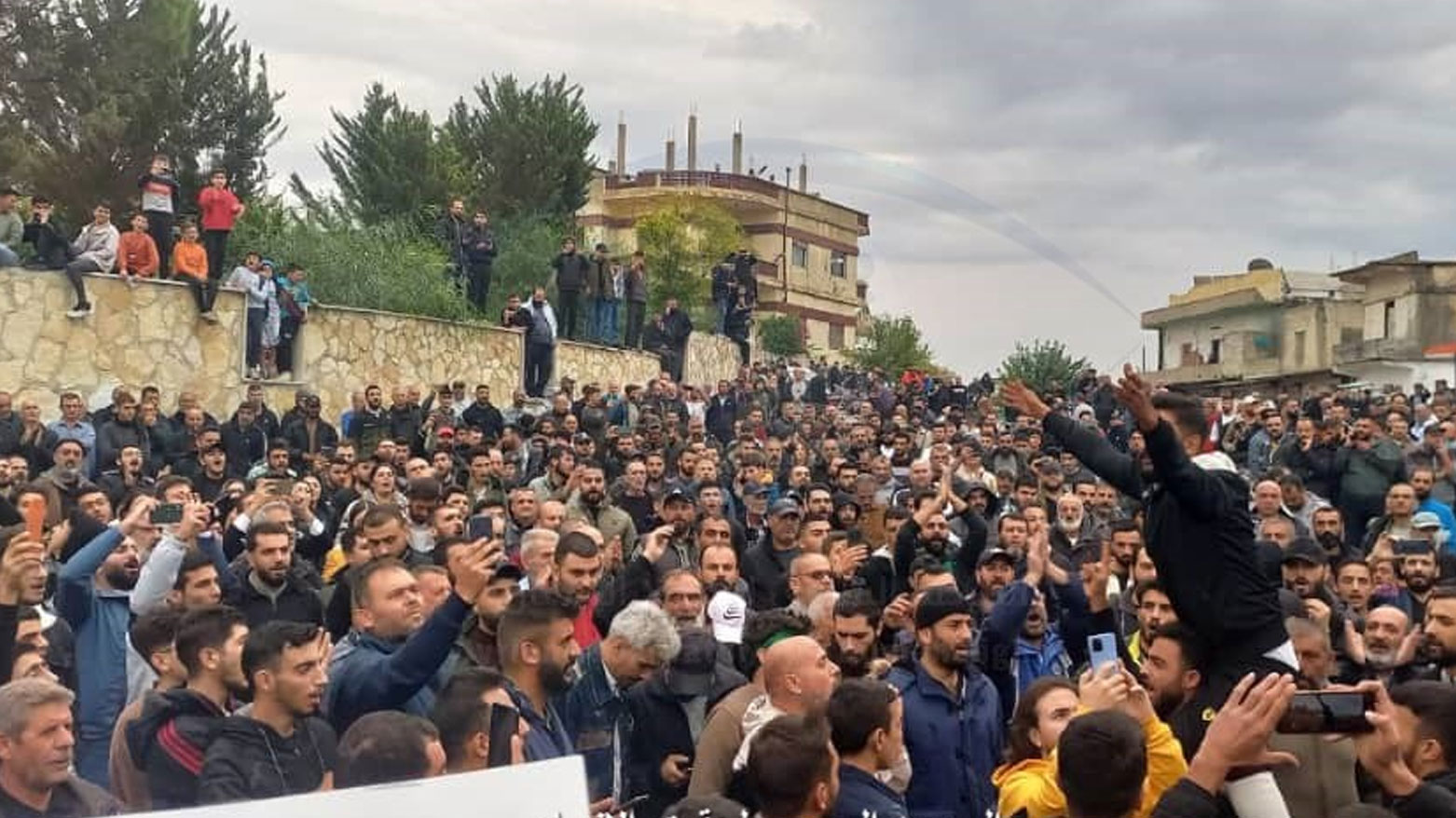Alawite Uprising Erupts Across Syria’s Coast, Demanding Federalism
Tens of thousands of Alawites launched large peaceful protests across Syria’s coast demanding federalism and the release of detainees, which led to clashes with pro-al-Sharaa' groups, even as authorities quietly mobilized forces while announcing a major operation against an ISIS-linked cell.

ERBIL (Kurdistan24) - In an unprecedented surge of public defiance, tens of thousands of Alawite citizens poured into the streets of Jableh, Latakia, Tartous, Baniyas, and parts of Hama and Homs, heeding the call of Sheikh Ghazal Ghazal—the head of Syria’s Higher Alawite Islamic Council—to rise peacefully against escalating violations, sectarian abuses, and the continued marginalization imposed on their communities. The sweeping movement, unfolding across 42 documented protest points, marks the most significant coastal mobilization in more than a decade.
The city of Jableh in Latakia province became the epicenter of the growing wave of peaceful demonstrations, with thousands rallying across major intersections such as Douar al-‘Imara, the Belt Road junction, al-Farwa area, and the hospital intersection. The protests soon expanded into the surrounding countryside, spreading through al-Daliyah, Beit Yashout, al-Qutailibiyah, Ain al-Sharqiyah, Ain Shaqaq, and the villages of Zama, al-Qubeisa, and al-Huwayz.
Demonstrators carried banners denouncing killing on sectarian grounds and called for an end to incitement and discriminatory policies. They chanted slogans in support of Sheikh Ghazal Ghazal’s initiative, demanding a federal state that transcends the sectarian alignments imposed over recent months, and urged the release of detainees and an end to ongoing violations.
According to the Syrian Observatory for Human Rights (SOHR), parallel pro-Sharaa‘ demonstrations erupted simultaneously in Jableh and Latakia, leading to clashes and confrontations that resulted in injuries among protesters calling for dignity and justice. Participants told SOHR that their movement does not seek power or a return to previous systems, but is instead a reaction to a year of marginalization, sectarian targeting, and mass violations. They stressed that Alawites themselves have suffered greatly from the authorities’ practices, insisting on building a federal state governed by law—one that guarantees equality and protection from abuses without deepening sectarian resentment or restricting Alawite communities within their own regions.
In an exclusive statement to Kurdistan24, the manager of SOHR expanded on the scale of the movement, describing it as a massive peaceful Alawite uprising unlike anything seen in the coastal provinces since 2011. He confirmed that tens of thousands of Alawite protesters took to the streets across Latakia, Tartous, Baniyas, Jableh, Qardaha, and rural areas of Hama and Homs. He noted that the practices of the temporary Syrian authority had driven the community to consolidate around Sheikh Ghazal Ghazal and respond collectively to his call for peaceful protest.
The protesters echoed demands for federalism, the release of detainees, and a halt to sectarian practices that have exhausted the community for an entire year. The manager described the scenes as reminiscent of the early 2011 demonstrations, with Alawite-majority areas witnessing a bold and unprecedented break from silence to condemn violations committed by the new Syrian government.
SOHR’s exclusive information also revealed unusual internal movements within Syrian state institutions, pointing to preparations to deploy security and military units to the coast—an action believed to be aimed at suppressing the expanding uprising. According to the sources, these mobilizations are being conducted in strict secrecy amid growing fears of widening unrest and a loss of control.
As coastal protests escalated, Syrian authorities announced a major security operation targeting what they described as one of the most dangerous ISIS-affiliated cells in northern Latakia. Abdulaziz Hilal al-Ahmad, Chief of Internal Security in the province, said in a statement that after intensive surveillance and precise monitoring, special units—working with the General Intelligence Directorate—carried out a “carefully planned” operation in the Badrousiyah area.
He stated that the cell had been planning attacks in the Syrian coastal region. During the operation, a firefight erupted after cell members refused to surrender, leading to the arrest of all members and the killing of two who resisted. Authorities seized large quantities of weapons and ammunition, while one intelligence officer sustained a severe injury. Al-Ahmad concluded that internal security forces would “pursue anyone who threatens the stability of the coast or supports terrorist groups,” promising firm action against any such attempts.
As the Alawite uprising grows in scale and defiance, the Syrian coast now stands at a critical juncture. The unprecedented protests—rooted in demands for federalism, justice, and protection from sectarian abuses—are unfolding amid simultaneous government security operations and quiet mobilizations that signal mounting fears within state institutions. With tens of thousands already in the streets and tensions escalating, Syria’s coastal region faces one of its most consequential moments since the earliest days of the country’s unrest.
